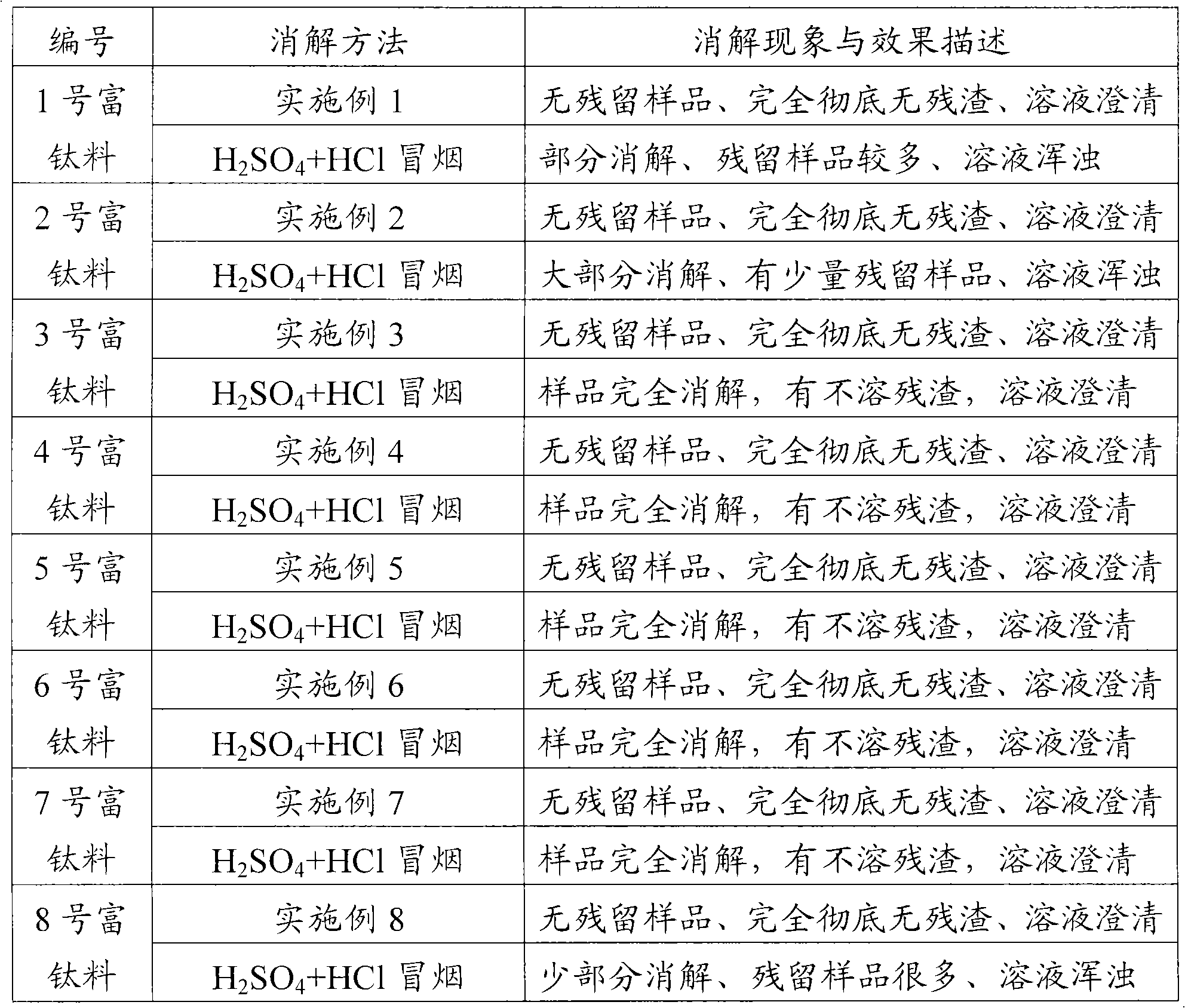Digestion method and detection method of titanium-rich material
A detection method and technology for titanium-rich materials, which are used in material excitation analysis, preparation of test samples, thermal excitation analysis, etc. Efficient, fast, and simple to test the effect of the solution
- Summary
- Abstract
- Description
- Claims
- Application Information
AI Technical Summary
Problems solved by technology
Method used
Image
Examples
Embodiment 1
[0024] The acids and reagents used in this example are all high-grade pure. The microwave digestion system used is Mars5 produced by CEM Company of the United States.
[0025] Digestion of titanium-rich materials
[0026] In this example, for TiO 2 The No. 1 titanium-rich material with a content of 97.55% was digested. Weigh 0.2500g of No. 1 titanium-rich material into the microwave digestion inner tank, add 5.0mL of nitric acid with a concentration of 65% to 68% and 1.0mL of hydrochloric acid with a concentration of 36% to 38% dropwise along the tank wall, and shake gently Digestion tank, make the acid fully contact with titanium-rich material at room temperature and pre-react until the liquid level is calm and free of bubbles and NO 2 Brown smoke is generated. After the temperature of the material in the digestion tank is close to room temperature, add 1.0mL of hydrofluoric acid with a concentration of 40% to 47%. In the digestion furnace, connect the temperature and pr...
Embodiment 2
[0035] In addition to using TiO 2 Except that No. 2 titanium-rich material with a content of 92.12% was used instead of No. 1 titanium-rich material, the titanium-rich material was digested in the same manner as in Example 1 and the digestion solution was detected.
Embodiment 3
[0037] In addition to using TiO 2 Except that No. 3 titanium-rich material (high titanium slag) with a content of 75.46% was used instead of No. 1 titanium-rich material, the titanium-rich material was digested in the same way as in Example 1 and the digestion solution was detected.
PUM
 Login to View More
Login to View More Abstract
Description
Claims
Application Information
 Login to View More
Login to View More - Generate Ideas
- Intellectual Property
- Life Sciences
- Materials
- Tech Scout
- Unparalleled Data Quality
- Higher Quality Content
- 60% Fewer Hallucinations
Browse by: Latest US Patents, China's latest patents, Technical Efficacy Thesaurus, Application Domain, Technology Topic, Popular Technical Reports.
© 2025 PatSnap. All rights reserved.Legal|Privacy policy|Modern Slavery Act Transparency Statement|Sitemap|About US| Contact US: help@patsnap.com



